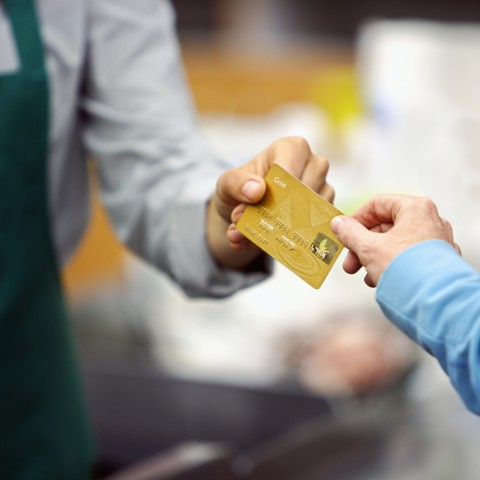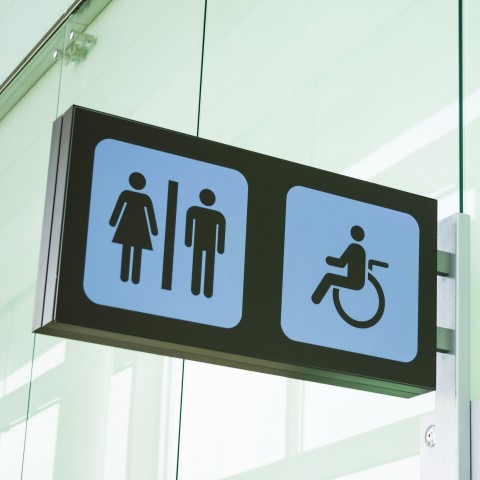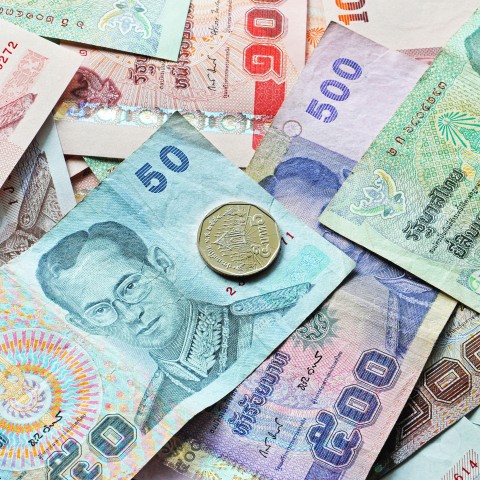Knowing Thai conjunction words enables you to communicate clearly and also makes your conversation sound smooth. Thus, connecting words in Thai are an important aspect of the Thai language. By learning them, you’ll be able to communicate like a native.
To help you master your Thai conjunctions, we’ll outline several key points in this article:
- Thai conjunctions definition
- A Thai conjunctions list with detailed explanations of each one
- Thai conjunctions in sentences and how to use them
Are you ready to learn Thai conjunctions? Let’s get started!

Table of Contents
- Conjunctions in Thai
- Thai Conjunctions Used to Link Sentences with Similar Meanings
- Thai Conjunctions Used to Express Opposition
- Thai Conjunctions Used to Express Alternatives
- Thai Conjunctions Used to Link Cause and Result
- How ThaiPod101 Can Help You Master Thai Grammar
1. Conjunctions in Thai
Let’s start this lesson with some basic knowledge about Thai conjunctions. Below we’ll explain their definition and functions, and the types of Thai conjunctions. And if you’re asking yourself “What are Thai linking words in writing?” you’ll find the answer here as well.
คำสันธาน (kham sǎn-thaan) is “conjunction” in Thai. Thai people use conjunctions to link sentences, which helps them convey their message through communication better. In order words, Thai conjunctions help shorten sentences or phrases, and makes them sound smoother.
There are four types of Thai language conjunctions, categorized by their functions. Each of them will be explained in detail with examples, as follows.
2. Thai Conjunctions Used to Link Sentences with Similar Meanings
The first type of Thai conjunction in our list of Thai conjunctions is คำสันธานที่เชื่อมความคล้อยตามกัน (kham sǎn-thaan thîi chûueam khwaam khláauy dtaam gan). This type of conjunction is used to link sentences or phrases with same-directioned meaning. Here are list of Thai conjunctions used to link sentences with similar meaning that you should know;
1- “And”
Thai: ละ (láe); กับ (gàp)
Usage: The Thai coordinating conjunctions และ (láe) and กับ (gàp) are used to link sentences that have similar meanings. Most of the time, the pattern used is noun + และ (láe), กับ (gàp) + noun or phrase + และ (láe), กับ (gàp) + phrase.
Example 1:
- พ่อและแม่ชอบกินก๋วยเตี๋ยว
- Phâaw láe mâae châawp gin gǔuai-dtǐiao
- “Father and mother like noodles.”
Example 2:
- ฉันเอาข้าวผัดกับไข่ดาว
- Chǎn ao khâao phàt gàp khài daao
- “I want fried rice and fried egg.”
Additional note: และ (láe) and กับ (gàp) are Thai linking words with the same meaning and can 100% substitute each other.
2- “Both…and…”
Thai: ทั้ง…และ… (tháng…láe…)
Usage: The Thai correlative conjunction ทั้ง…และ… (tháng…láe…) is always used as it is here, with both words. Its meaning and usage is the same as it is in English.
Example:
- ทั้งพี่ชายและน้องสาวชอบกินขนมปัง
- Tháng phîi-chaai láe náawng-sǎao châawp gin khà-nǒm-bpang
- “Both the older brother and the younger sister like to eat bread.”
3- “After…, …”
Thai: …แล้ว… (…láaeo…); พอ…แล้ว… (phaaw…láaeo…)
Usage: The Thai subordinating conjunctions …แล้ว… (…láaeo…) and พอ…แล้ว… (phaaw…láaeo…) are both used as a word that links sentences, explaining two actions that happen continuously. The patterns of sentences using this Thai conjunction are listed below:
- [Sentence of action that happens first] + แล้ว (láaeo) + [sentence of action that happens later]
- พอ (phaaw) + [sentence of action that happens first] + แล้ว (láaeo) + [sentence of action that happens later]
Example 1:
- กินข้าวแล้วค่อยกินยา
- Gin khâao láaeo khâauy gin yaa
- “Take the medicine after the meal.”
Example 2:
- พออาบน้ำแล้วฉันก็นอนเลย
- Phaaw àap-nám láaeo chǎn gâaw naawn looei
- “After taking a bath, I went straight to bed.”
Additional note: …แล้ว… (…láaeo…) and พอ…แล้ว… (phaaw…láaeo…) are Thai linking words with the same meaning and can 100% substitute each other.
3. Thai Conjunctions Used to Express Opposition
The second type of Thai conjunction is คำสันธานที่เชื่อมใจความขัดแย้งกัน (kham sǎn-thaan thîi chûueam jai-khwaam khàt-yáaeng gan). This type of conjunction is used to link sentences or phrases with opposing meanings. Here is our list of Thai conjunctions used to express opposition that you should know.
1- “But”
Thai: แต่ (dtàae); แต่ว่า (dtàae-wâa)
Usage: The Thai coordinating conjunctions แต่ (dtàae) and แต่ว่า (dtàae-wâa) are used to link sentences that have opposing meanings. The pattern that’s normally used is sentence + แต่ (dtàae) or แต่ว่า (dtàae-wâa) + sentence.
Example 1:
- ฉันชอบสีฟ้าแต่พี่สาวชอบสีแดง
- Chǎn châawp sǐi fáa dtàae phîi-sǎao châawp sǐi daaeng
- “I like blue, but my older sister likes red.”
Example 2:
- เพื่อนของฉันเก่งเลขมากแต่ว่าอ่อนภาษาอังกฤษ
- Phûuean khǎawng chǎn gèeng lêek mâak dtàae-wâa àawn phaa-sǎa ang-grìt
- “My friend is very good at Math but bad at English.”
Additional note: แต่ (dtàae) and แต่ว่า (dtàae-wâa) are Thai conjunctions with the same meaning and can 100% substitute each other. Also, แต่ (dtàae) and แต่ว่า (dtàae-wâa) can also be translated as “yet” in Thai.
2- “However”
Thai: อย่างไรก็ตาม (yàang-rai gâaw dtaam)
Usage: The subordinating conjunction อย่างไรก็ตาม (yàang-rai gâaw dtaam) is used to link sentences with opposing meanings. The pattern that’s normally used is sentence + อย่างไรก็ตาม (yàang-rai gâaw dtaam) + sentence.
Example 1:
- วันนี้อากาศมีมลพิษมาก อย่างไรก็ตาม หลายคนยังไม่ใส่หน้ากากเมื่อออกไปข้างนอก
- Wan-níi aa-gàat mii mon-lá-phít mâak yàang-rai gâaw dtaam lǎai khon yang mâi sài nâa-gàak mûuea àawk bpai khâang-nâawk
- “Today, air pollution is very bad. However, many people don’t wear facial masks when they go outside.”
Additional note: The meanings of แต่ (dtàae), แต่ว่า (dtàae-wâa), and อย่างไรก็ตาม (yàang-rai gâaw dtaam) are pretty much the same. However, Thai people use อย่างไรก็ตาม (yàang-rai gâaw dtaam) in more formal situations.
3- “Although” / “Despite” / “In spite of”
Thai: ทั้ง ๆ ที่…(แต่)… (tháng-tháng-thîi…[dtàae]…)
Usage: The subordinating conjunction ทั้ง ๆ ที่…(แต่)… (tháng-tháng-thîi…[dtàae]…) is used to link sentences or phrases with opposing meanings. There are two ways to use this Thai conjunction. You can either put แต่ (dtàae) between the sentences or skip it. The pattern that’s normally used is ทั้ง ๆ ที่ (tháng-tháng-thîi) + sentence + (แต่ [dtàae]) + sentence.
Example 1:
- ทั้ง ๆ ที่เธอสวยมาก แต่เธอกลับไม่เคยมีแฟนเลย
- Tháng-tháng-thîi thooe sǔuai mâak dtàae thooe glàp mâi khooei mii faaen looei
- “Despite being so beautiful, she’s never had a boyfriend before.”
Example 2:
- ทั้ง ๆ ที่อากาศหนาว เขายังกินไอศครีมอีก
- Tháng-tháng-thîi aa-gàat nǎao khǎo yang gin ai-sà-khriim ìik
- “In spite of cold weather, he still eats ice cream.”
4- “By the time…, …”
Thai: กว่า…ก็… (gwàa..gâaw…)
Usage: The Thai conjunction กว่า…ก็… (gwàa..gâaw…) is used to link sentences and phrases (or a sentence and another sentence) with opposing meanings. This Thai connecting word in English is like “by the time…, …” and is used the same way. The patterns that are normally used are as follows:
- กว่า (gwàa) + sentence + ก็ (gâaw) + phrase
- กว่า (gwàa) + sentence + subject of second sentence + ก็ (gâaw) + the rest of second sentence
Example 1:
- กว่าเธอจะทำการบ้านเสร็จ ก็ถึงเวลานอนพอดี
- Gwàa thooe jà tham gaan-bâan sèt gâaw thǔeng wee-laa naawn phaaw-dii
- “By the time she finishes her homework, it will be her bedtime.”
Example 2:
- กว่าเธอจะพร้อมมาช่วยฉัน ฉันก็คงทำเสร็จไปแล้ว
- Gwàa thooe jà phráawm maa chûuai chǎn chǎn gâaw khong tham sèt bpai láaeo
- “By the time you’re ready to help me, I will have already finished it.”
4. Thai Conjunctions Used to Express Alternatives
The third type of Thai conjunction is คำสันธานที่เชื่อมใจความให้เลือกอย่างใดอย่างหนึ่ง (kham sǎn- thaan thîi chûueam jai-khwaam hâi lûueak yàang dai yàang nùeng). This type of conjunction is used to link alternatives. Here is our list of Thai conjunctions in English used to express alternatives that you should know.
1- “Or”
Thai: หรือ (rǔue)
Usage: The Thai coordinating conjunction หรือ (rǔue) is used to show alternatives. The pattern that’s normally used is alternative 1 + หรือ (rǔue) + alternative 2.
Example :
- เธอจะกินไข่ต้มหรือไข่เจียว
- Thooe jà gin khài dtôm rǔue khài jiiao
- “Do you want a boiled egg or omelette?”
2- “Either…or…”
Thai: ไม่…ก็… (mâi…gâaw…); หรือไม่ก็ (rǔue mâi gâaw)
Usage: The Thai correlative conjunctions ไม่…ก็… (mâi…gâaw…) and หรือไม่ก็ (rǔue mâi gâaw) are used to show alternatives. The patterns that are normally used are:
- ไม่ (mâi) + alternative 1 + ก็ (gâaw) + alternative 2
- alternative 1 + หรือไม่ก็ (rǔue mâi gâaw) + alternative 2
Example 1:
- พรุ่งนี้น้องชายต้องใส่เสื้อไม่สีขาวก็สีฟ้า
- Phrûng-níi náawng chaai dtâawng sài sûuea mâi sǐi khǎao gâww sǐi fáa
- “Tomorrow, my younger brother has to wear either a white or blue shirt.”
Example 2:
- ฉันอยากเลี้ยงปลาหรือไม่ก็กระต่าย
- Chǎn yàak líiang bplaa rǔue mâi gâaw grà-dtàai
- “I want either a fish or rabbit as my pet.”
Additional note: ไม่…ก็… (mâi…gâaw…) and หรือไม่ก็ (rǔue mâi gâaw) are Thai linking words with the same meaning and can 100% substitute each other.
3- “Or else” and “Otherwise”
Thai: ไม่อย่างนั้น (mâi yàang nán); ไม่เช่นนั้น (mâi chêen nán); มิฉะนั้น…ก็ (mí chà-nán…gâaw)
Usage: The Thai conjunctions ไม่อย่างนั้น (mâi yàang nán), ไม่เช่นนั้น (mâi chêen nán), and มิฉะนั้น…ก็ (mí chà-nán… gâaw) are used to show forced alternatives. If alternative 1 isn’t chosen, then it will be alternative 2. The patterns that are normally used are:
- alternative 1 + ไม่อย่างนั้น (mâi yàang nán) + alternative 2
- alternative 1 + ไม่เช่นนั้น (mâi chêen nán) + alternative 2
- alternative 1 + มิฉะนั้น (mí chà-nán) + subject of alternative 2, if any + ก็ (gâaw) + the rest of alternative 2
Example 1:
- นักเรียนต้องออกจากบ้านแต่เช้า ไม่อย่างนั้น จะไปโรงเรียนสาย
- Nák-riian dtâawng àawk jàak bâan dtàae cháo mâi yàang nán jà bpai roong-riian sǎai
- “The student has to leave their home early or else they will be late for school.”
Example 2:
- พนักงานต้องปฏิบัติตามกฎ ไม่เช่นนั้น จะโดนไล่ออก
- Phá-nák-ngaan dtâawng bpà-dtì-bàt dtaam gòt mâi chêen nán jà doon lâi-àawk
- “Staff members have to obey the rules, otherwise they will be fired.”
Example 3:
- คุณต้องตอบกลับภายใน 24 ชั่วโมง มิฉะนั้นก็จะถือว่าสละสิทธิ
- Khun dtâawng dtàawp glàp phaai nai yîi-sìp-sìi chûua-mong mí chà-nán gâaw jà thǔue wâa sà-là-sìt
- “You have to reply within 24 hours, or else it’s considered to be a waiver.”
Additional note: Among these three conjunctions, despite having the same meaning, ไม่อย่างนั้น (mâi yàang nán) is the most casual one. Thai people often use ไม่อย่างนั้น (mâi yàang nán) in oral conversations. On the other hand, ไม่เช่นนั้น (mâi chêen nán) and มิฉะนั้น…ก็ (mí chà-nán…gâaw) are more formal, so they’re often used in written language.
5. Thai Conjunctions Used to Link Cause and Result
The last type of Thai conjunction is คำสันธานที่เชื่อมใจความเป็นเหตุเป็นผลกัน (kham sǎn-thaan thîi chûueam jai-khwaam bpen hèet bpen phǒn gan). This type of conjunction is used to link sentences that show cause and result together. Here’s our list of Thai conjunctions to link cause and result that you should know.
1- Because
Thai: เพราะ (phráw); เพราะว่า (phráw wâa); ฉะนั้น…จึง… (chà-nán…jueng)
Usage: The Thai subordinating conjunctions เพราะ (phráw), เพราะว่า (phráw wâa), and ฉะนั้น…จึง… (chà-nán…jueng) are used to show the cause and result of an event. The patterns that are normally used are:
- result + เพราะ (phráw) + cause
- result +เพราะว่า (phráw wâa) + cause
- cause + ฉะนั้น (chà-nán) + subject of reason sentence + จึง (jueng) + the rest of reason sentence
Example 1:
- น้ำสอบตก เพราะ ไม่ตั้งใจเรียน
- Nám sàawp dtòk phráw mâi dtâng-jai riian
- “Nam didn’t pass the test because she didn’t pay attention in class.”
Example 2:
- น้อยไม่สบาย เพราะ ทานอาหารไม่สะอาด
- Náauy mâi sà-baai phráw thaan aa-hǎan mâi sà-àat
- “Noi is sick because she eats unhealthy food.”
Example 3:
- วันนี้อากาศร้อนมาก ฉะนั้น ฉันจึงไม่ออกไปข้างนอก
- Wan-níi aa-gàat ráawn mâak chà-nán chǎn jueng mâi àawk bpai khâang nâawk
- “Because the weather is very hot today, I decided not to go out.”
Additional note: เพราะ (phráw) and เพราะว่า (phráw-wâa) are Thai linking words with the same meaning and can 100% substitute each other. Keep in mind that ฉะนั้น…จึง… (chà-nán…jueng) is normally used in written language.
2- “So,” “Therefore,” and “Thus”
Thai: เพราะฉะนั้น (phráw chà-nán); ดังนั้น (dang-nán)
Usage: The Thai conjunction words เพราะฉะนั้น (phráw chà-nán) and ดังนั้น (dang-nán) are used to show the cause and result of an event. The patterns that are normally used are cause + เพราะฉะนั้น (phráw chà-nán) or ดังนั้น (dang-nán) + result.
Example 1:
- คุณพ่ออยากสุขภาพแข็งแรง เพราะฉะนั้น ท่านเลยออกกำลังกายทุกวัน
- Khun phâaw yàak sùk-khà-phâap khǎeng-raaeng phráw chà-nán thâan looei àawk-gam-lang-gaai thúk-wan
- “My father wants to be healthy so he exercises everyday.”
Example 2:
- ตรงนี้รถเยอะมาก ดังนั้น ข้ามถนนต้องระวัง
- Dtrong níi rót yóe mâak dang-nán khâam thà-nǒn dtâawng rá-wang
- “There are a lot of cars in this area, thus you have to be careful when you cross the road.”
Additional note: เพราะฉะนั้น (phráw chà-nán) and ดังนั้น (dang-nán) are Thai linking words with the same meaning and can 100% substitute each other.
6. How ThaiPod101 Can Help You Master Thai Grammar
How are you doing with this topic so far? We hope this topic isn’t too difficult for you!
As you can see, how to use many of these words is similar to doing so in the English language. So with a little practice, you can excel in this in no time. If you know Thai people, try using some of these Thai conjunctions when talking with them! Thai people will find it easier to understand the conversation that way.
If you find that Thai conjunctions are very different from those in your native language, or you’re just having some difficulty with them, let us know in the comments!
And after finishing this lesson, you should continue learning with another enjoyable lesson at ThaiPod101.com, such as the numbers 1-10 in Thai or popular food souvenirs. Have fun studying Thai!

























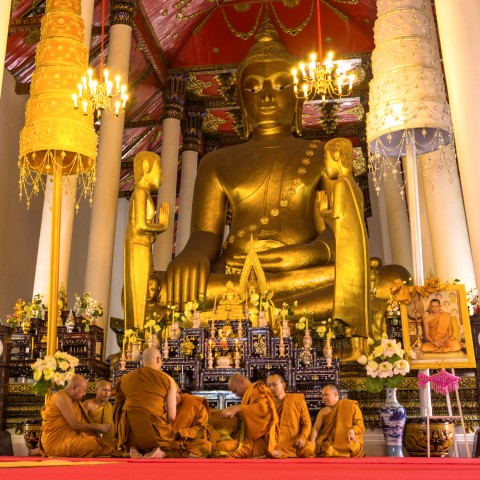










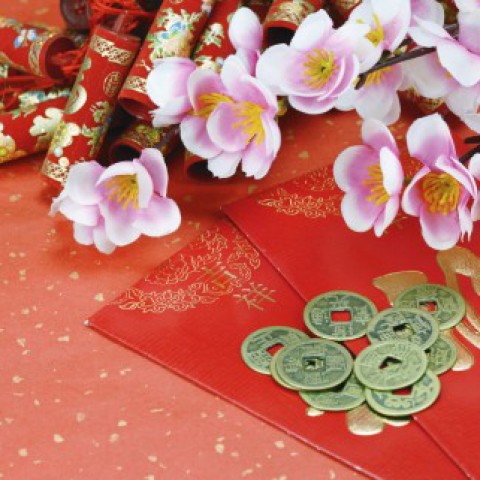
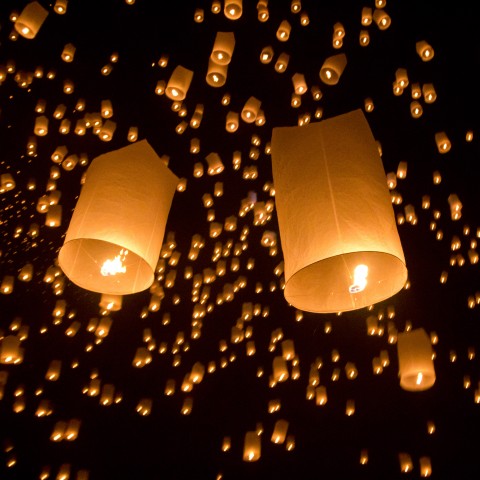




![How to ไหว้ [wâi]](https://wordlist.languagepod101.com/wordlist/media/25584&v=medium.jpg)


